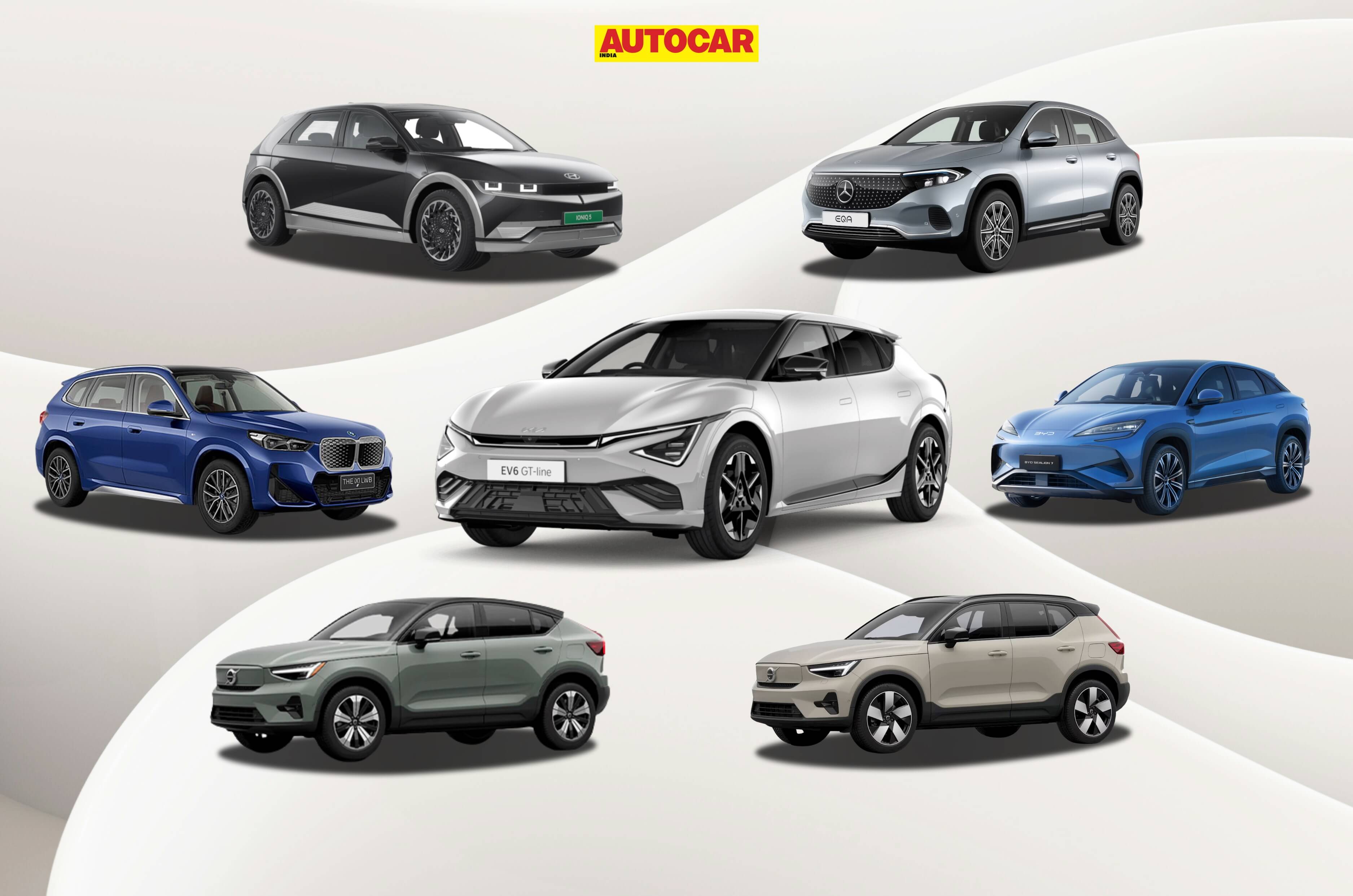
The recently launched Kia EV6 facelift packs an array of exterior and interior updates along with a bigger battery, with no bump in its ex-showroom price of Rs 65.9 lakh. Its sibling is the Hyundai Ioniq 5, and rivals include the Mercedes EQA, Volvo EX40, Volvo C40 Recharge, BMW iX1 LWB and BYD Sealion 7. We compare these seven electric vehicles on paper to see where the latest EV6 stands.
Kia EV6 facelift price vs rivals
EQA costliest
Mercedes’ entry-level EQA electric SUV costs Rs 67.2 lakh and is the priciest on this list, followed by the facelifted EV6, which is cheaper by Rs 1.3 lakh. Of the two Volvos, the C40 Recharge, which costs Rs 62.95 lakh, is closer to the Kia EV in price. The BMW iX1 LWB (brought via CKD route) is competitively priced at under Rs 50 lakh, but the price is limited to only the first six months of production. The Sealion 7, priced from Rs 48.90 lakh, is the only one on this list to come in two variants.
Ioniq 5 most affordable
At Rs 46.05 lakh, the Hyundai Ioniq 5 is the most affordable EV here, yet it is the most expensive Hyundai car in India. The massive Rs 19.88 lakh price difference between the Kia and Hyundai electric SUV models may be attributed to the fact that the all-wheel drive EV6 is fully imported into India, while the Ioniq 5 is locally assembled and is rear-wheel drive.
Kia EV6 facelift dimensions vs rivals
EV6 sits on a smaller wheelbase than the Ioniq 5
After the Sealion 7, the Kia EV6 is the second longest among these seven eSUVs, longer by 60mm than the iX1 LWB and a notable 255mm than the EQA. While it matches the Ioniq 5 in width, the EV6 is slightly shorter and may offer less headroom. Though the E-GMP base underpins both Korean SUVs, the Hyundai EV has a longer 3,000mm wheelbase that exceeds even the other German, Chinese and Swedish rivals. In terms of practicality, the EV6 offers 480 litres of boot space, placed between the iX1 LWB (490 litres) and the Ioniq 5 (531 litres), and is far ahead of the EQA’s 340 litres.
Kia EV6 facelift battery and motor specs vs rivals
EV6 has the highest battery capacity
Outpaced only by the Sealion 7 AWD and the Volvo C40 Recharge, the facelifted Kia EV6 has a lead in the power and torque departments over the rest by a fair margin. The new EV6 not only boasts the largest battery capacity but also offers the highest driving range: 663km on the MIDC. That translates into a 32km edge over the Ioniq 5 and 132km over the iX1 LWB. The four-wheel drive version of the BYD SUV is the quickest in clocking the 100kph mark from rest, while the EQA is the slowest.
Korean EVs charge the fastest
The Korean duo offer a maximum fast charging time of 18 minutes. The other electric vehicles have a battery charging time ranging between 29 to 45 minutes. With an AC charger, the Sealion 7 takes the most time to juice up at 11 hours.
*Modified Indian Driving Cycle (MIDC)
**Worldwide Harmonized Light Vehicles Test Procedure (WLTP)
Also, see:
Kia EV6 new vs old: same price, new design, greater range